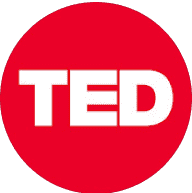Biology: Basic Chemistry Review
Science With Johnston・1 minute read
Atoms consist of electrons, protons, and neutrons, with chemical bonding involving covalent and ionic bonds to form molecules. Covalent bonding involves sharing electrons, while ionic bonds result from electron transfer, with elements defined by protons and compounds formed by bonding elements together.
Insights
- The structure of an atom consists of electrons surrounding a nucleus composed of protons and neutrons, with the nucleus holding most of the atom's mass. Protons carry a positive charge, electrons a negative charge, and neutrons are neutral but contribute to the atom's mass, essential for radioactive dating.
- Chemical bonding involves atoms forming molecules through covalent or ionic bonds, with covalent bonding being prevalent in biology. Covalent bonds entail electron sharing for stability, with most atoms striving for eight electrons in their outer shell, except hydrogen which aims for two. Ionic bonds, on the other hand, involve electron transfer to achieve stability, leading to ions with opposite charges that attract each other.
Get key ideas from YouTube videos. It’s free
Recent questions
What are the components of an atom?
Electrons, protons, neutrons, nucleus.
How do atoms form molecules?
Covalent, ionic bonds; sharing, transferring electrons.
What is the most common type of chemical bonding in biology?
Covalent bonding.
How do ionic substances behave in water?
Dissociate into ions, interact with water molecules.
What defines elements and compounds?
Elements have specific protons, compounds bond multiple elements.
Related videos
Summary
00:00
"Understanding Atoms, Bonds, and Elements"
- Atoms consist of four parts: electrons on the outside, a nucleus with protons and neutrons, with the nucleus containing most of the atom's mass.
- Protons provide a positive charge, electrons a negative charge, and neutrons are neutral but have mass, crucial for radioactive dating.
- Chemical bonding involves atoms forming molecules through covalent or ionic bonds, with covalent bonding being the most common in biology.
- Covalent bonds involve atoms sharing electrons to achieve stability, with most atoms aiming for eight electrons in their outer shell, except hydrogen which aims for two.
- Ionic bonds occur when atoms transfer electrons to achieve stability, resulting in ions with opposite charges that attract each other.
- Ionic substances in water tend to dissociate, breaking apart into ions that interact with water molecules rather than staying bonded.
- Weak attractive forces like hydrogen bonds can exist between separate molecules, although they are much weaker than covalent or ionic bonds.
- Elements are the simplest pure substances, with specific numbers of protons defining their identity, while compounds are formed by bonding multiple elements together.




